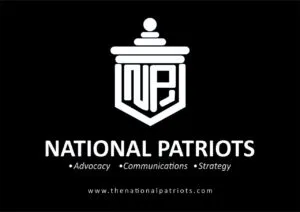This is the story of how Olusegun Obasanjo’s support of the structure of criminality ruined Peter Obi’s chances, transformed Anambra State and produced the Peter Obi currently on the national stage. It is also a story of how Obasanjo is trying to make amends in the late hours of his life, hoping to make heaven.
During the 2004 World Igbo Congress Convention in New Jersey, Chekwas Okorie, the then chairman of All Progressives Grand Alliance (APGA), told a few of us inside a hotel room what happened between him and Olusegun Obasanjo during the 2003 elections in Nigeria. Chekwas Okorie’s story illustrated who Bola Tinubu, then governor of Lagos State, was and how he differed from Peter Obi.
According to Chekwas Okorie, in 2003, APGA won the election in four of the five South-Eastern states. But the PDP rigging machine, now known as structure, rigged APGA’s governorship candidates out. In those days of an unholy alliance between President Olusegun Obasanjo and INEC’s Chairman, Maurice Iwu, they wasted no time with sophisticated rigging methods. They simply wrote the desired results and handed them to INEC officials to announce.
When INEC announced the result of the 2003 elections, Chekwas Okorie went to Olusegun Obasanjo to complain. Obasanjo acknowledged the rigging and promised to hand two or three states back to APGA. He asked Chekwas Okorie to go and consult his party on which states he would like Obasanjo to hand over to APGA.
During the same election, PDP had plans to rig the Action Congress of Nigeria (ACN) out of the South West. As the results were being published online on the INEC website, all the South-Western states were falling to PDP. When the then Lagos State governor, Bola Tinubu, saw what was happening, he called President Obasanjo. He told Obasanjo that he had in his command 10,000 area boys with gallons of petrol ready to burn down federal government properties in Lagos if INEC announced that he lost to PDP.
In the words of Chekwas Okorie, Obasanjo immediately called Maurice Iwu and asked him to leave Lagos State alone. That was how Lagos State was left alone, while other states in the South-West became PDP states.
Meanwhile, Chekwas Okorie returned to Obasanjo days after the election. He had consulted his party people and they had chosen the three states he wanted Obasanjo to hand over to APGA. One of the states was Anambra.
At this point, Obasanjo had seen that all was calm in the South-East. The people had accepted their fate and moved on. Obasanjo told Chekwas Okorie off and asked him to go and do his worse.
This act of condoning the structure of criminality on the part of Olusegun Obasanjo gave Anambra State the governorship of Dr Chris Ngige.
Another bombshell dropped a day after Chekwas Okorie told us the story above. In the same conference, Obasanjo’s boy, Chris Ubah, acknowledged in front of Governor Chris Ngige and Anambra State indigenes that he was the person who wrote the results of the Anambra State gubernatorial election and handed over the paper to an INEC officer who read it out to the world. He pointed at Peter Obi, who was in the audience, and said, this was the man who won the election.
Peter Obi did not give up on his stolen mandate, unlike the APGA gubernatorial candidates in other Southeastern States. He fought in several courts for almost three years. It culminated in the court kicking out Dr Ngige as governor in March 2006. It did not end there. Enforcers of Obasanjo’s structure of criminality did not leave Peter Obi to govern the state in one piece. The hoodlums who burnt down government offices and radio stations under Governor Chris Ngige in November 2004 continued to attack. In October 2006, they burnt down the governor’s lodge in Onitsha. It was part of well-orchestrated efforts by the same hoodlums enjoying the cover of then President Olusegun Obasanjo to unleash mayhem on the state. Their suit-and-tie colleagues in the State House of Assembly impeached the governor twice. Peter Obi survived all those attempts and became stronger in the end.
So, days after the 2023 presidential election, when Obasanjo walked out to make a press statement denouncing the conduct of the exercise, those of us from Anambra State had a different take on the words coming out of his mouth. To us, Obasanjo sounded like a man who had forgotten these incidents of the past. But the truth is that he did not.
In a leaked audio that Charly Boy initially denied but later confirmed, Obasanjo had wanted the musician to lead a protest in Lagos and Abuja against INEC’s declaration of Bola Tinubu as the president-elect. In Charly Boy’s version of events, Obasanjo later called him back and asked him not to proceed with the protest for fear that the Nigerian military would kill protesters.
We can forgive those young people who think Obasanjo became penis-shy about protest because of the EndSARS killings. No. During Obasanjo’s eight years as president, he supervised the Nigerian military’s massacre of unarmed civilians.
Under Obasanjo’s order, on 20 November, 1999, the Nigerian military invaded Odi in Bayelsa State and killed over 900 people. The military’s excuse was that a gang of Niger Delta militants killed twelve police officers days before. In a February 2013 judgment, the Federal High Court ordered the Federal Government to pay N37.6 billion compensation to the people of Odi for the Nigerian military’s massacre and burning down of their town. In May 2014, Jonathan’s administration paid N15 billion as compensation.
Again under Obasanjo’s order, the military attacked Zaki-Biam in Benue State in October of 2001 and killed over 200 people. The military gave the excuse that they went to enforce order in a region of Tiv villages where militants killed 19 soldiers. Amongst those killed were women, children, and the elderly. The Nigerian government initially denied the killings. President Umaru Yar’Adua later apologised in 2007 during a visit to Benue.
Again under Obasanjo’s order, the military attacked Zaki-Biam in Benue State in October of 2001 and killed over 200 people. The military gave the excuse that they went to enforce order in a region of Tiv villages where militants killed 19 soldiers. Amongst those killed were women, children, and the elderly. The Nigerian government initially denied the killings. President Umaru Yar’Adua later apologised in 2007 during a visit to Benue.











